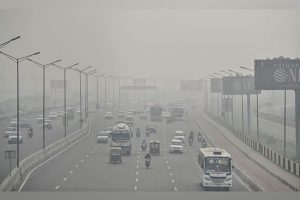Martyrdom by 20 soldiers while defending India’s territorial integrity at the Galwan Valley in eastern Ladakh was the most shining example of the valour of the Indian armed forces in 2020 as they resolutely countered the country’s adversaries on the LAC with China and the LoC with Pakistan during the year.
The year began with a momentous decision in India’s defence history. The Department of Military Affairs was set up and the post of Chief of Defence Staff (CDS) created. Gen Bipin Rawat assumed office of CDS on 1 January. He was also made Principal Military Advisor to the Defence Minister on all tri-services matters.
Advertisement
But the military standoff with China at eastern Ladakh that began in April- May is perhaps the biggest challenge the Indian Army has faced in the last few decades. With China continuing with its aggressive posturing against India, the face-off is unlikely to end any time soon. Top officials of all the three wings of the armed forces have gone on record to say that the forces were prepared for any misadventure by China.
India has, meanwhile, categorically told China that any attempt to unilaterally alter the status quo was unacceptable and that the Indian forces were determined to protect the country’s sovereignty and territorial integrity at any cost.
To make the Indian Army future ready, budgetary constraints for capability development and meeting other requirements were removed during the year.
Eight French Rafale fighter jets were inducted into the Indian Air Force (IAF) and operationalised on 20 September, sending a strong message to those who challenge India’s sovereignty. With its world class capability, Rafale aircraft is a gamechanger for India’s national security. Air version of supersonic BrahMos Air missile were integrated on Su-30 MKI.
The strength of the Indian Navy was further increased with the commissioning of INS Kavaratti (P31), a fully combat-ready anti-submarine warfare (ASW) stealth corvette and commissioning of warship IN LCU L57.
In line with Prime Minister Narendra Modi’s vision of ”Atmanirbhar Bharat”, the government unveiled the Defence Acquisition Procedure 2020 which aims to give an impetus to the growing domestic industry and achieve enhanced selfreliance in defence manufacturing. Defence Offset Guidelines 2020 were promulgated to attract investments and technology through offsets to enhance capabilities in the domestic defence manufacturing sector and promote the “Make in India” initiative.
An ‘Atma Nirbharta’ week was celebrated in August to promote indigenous development of materials and equipment to achieve selfreliance in defence manufacturing. The foreign direct investment (FDI) limit in defence manufacturing under the automatic route was raised from 49 per cent to 74 per cent.
Women’s participation in the armed forces has been increasing over the years and the government took further steps in 2020 to enhance their role. Short Service Commissioned (SSC) women officers were granted permanent commission in all ten streams of the Indian Army. Four women officers were appointed onboard Indian Navy ships.
Border Roads Organisation (BRO) continued with works of strategic importance like construction of major bridges, roads and tunnels. The world’s longest Highway tunnel — Atal Tunnel — built by BRO was dedicated to the nation by Prime Minister Narendra Modi on 3 October. The 80- km long road link from Dharchula (Uttarakhand) to Lipulekh (China Border) was inaugurated on 20 May. About 45 bridges of strategic importance in sensitive areas close to western, northern and north eastern borders across seven states and union territories were opened on 12 October.
The armed forces played a pivotal role in mitigating the sufferings of the people in the face of Coronavirus. They meticulously undertook operations to rescue stranded Indians from COVID-19 affected countries, such as China, Iran, Italy and Malaysia and to provide relief materials to all across the country. Hospitals of the armed forces and medical facilities have been dedicated to treat COVID-19 patients.











